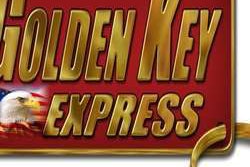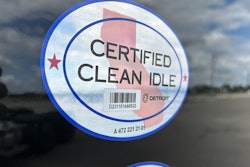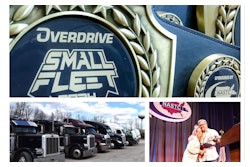Careful attention to your PM schedule will pay big dividends.
THIS ARTICLE IS FROM the 2007 Partners in Business manual for owner-operators. The next Partners in Business seminar will be 2 to 4 p.m. Aug. 24 during the Great American Trucking Show in Dallas. The manual costs $14.95, including shipping; to order, call (800) 633-5953, Ext. 1301. Visit www.piblive.com for more excerpts and program information. The seminars and the manual are brought to you by Overdrive, ATBS, Freightliner Trucks and Castrol.
Systematic preventive maintenance saves you money in the long run by reducing the chances of equipment failure on the road and reducing time lost to repairs. It also helps reduce the severity of failures if they do occur. A properly maintained engine will last much longer and use less fuel.will last much longer and use less fuel.
Don’t neglect practices less familiar than changing oil. Also important is using quality oil and filters, as well as timely coolant servicing (including system flushing). Using synthetic transmission and axle lubes and changing at required intervals will help the life of those components. Using a self-adjusting clutch, and driving with the proper technique (starting in a low enough gear), will lower maintenance and repair costs by a significant percentage.

Adjusting the overheads after break-in and then at the required infrequent intervals saves fuel, reduces oil sooting and wear, and is likely to lengthen the life of valves and injectors. Replacing injectors before combustion gets too dirty will prolong life, too. Using quality fuel filters will, in turn, prolong injector life. Various long-life antifreeze options, such as extended life coolants and coolant filters that add supplemental coolant additives on a controlled basis, should be considered even though the initial cost may be higher.
A simple plan that doesn’t require technical skill and special equipment will include tires, engine oil, wipers, lights, filters, coolant and belts/hoses. A more technical PM will include brakes, drive axles, wheel seals, transmission, batteries, exhaust, driveline, suspension, steering, clutch and engine.
AN OUNCE OF PREVENTION
A manufacturer typically recommends a standard PM schedule for every model. The Technology & Maintenance Council of the American Trucking Associations also provides PM guidelines for tractors and trailers. Follow these schedules diligently, and you’ll head off a lot of trouble.
Daily inspections, required by the U.S. Department of Transportation, can help identify problems before they become emergencies. A leaking differential, for example, should be repaired before the loss of lubricant causes component failure. Early warning signs found by oil analysis of engines or driveline components can alert you to serious problems before costly troubles occur. If you have a truck with more than 300,000 miles, consider running a dynamometer test once a year.
Always look for common problems: seal leaks, loose bolts, chafed wires and hoses, improper adjustments and worn, broken or missing parts. If you cannot recognize these problems, have a qualified technician inspect your rig every six months. An alternative is having lubrication service done at a dealer or truck stop where experienced technicians will look for problems as they work.
KEEP GOOD RECORDS
Only with complete records can you track the work done on your truck and prove that required work has been done when you need to file a warranty claim. Committing every shop visit to paper and creating a calendar of scheduled visits will pay off.
Keeping records doesn’t have to be complicated. You can write everything in a notebook – date, location and work done – or log it in your computer, as long as you back up your records. You also should schedule work to be done: oil changes and analysis, major inspections and coolant system service.
Make your own maintenance service report and use it to keep a record of every dollar you spend on your truck. Keep receipts on repairs. Keep old parts in case of a warranty dispute.
Good maintenance records also can help you determine average miles per gallon, expenses on a per-mile basis, and other key benchmarks that can be helpful in cutting costs.
WAYS TO SAVE MONEY ON MAINTENANCE
There are many ways to save money on maintenance without courting disaster:
STAY ON SCHEDULE. Plan your maintenance schedule as thoroughly as you plan this week’s haul, and stick to it. Using a calendar, notebook, or software program that will send you e-mail reminders, plot oil changes, major inspections and tune-ups. This especially is helpful for keeping track of items in the PM manuals that wouldn’t naturally occur to you, such as adjusting overheads. If your schedule says it’s time for a tune-up, don’t put it off.
SHOP AROUND. Only 15 percent of owner-operators cite price as their primary factor in deciding where to buy their oil, according to Overdrive research. They give more weight to convenience, but sometimes the cost of convenience can be expensive. For oil and other products and services, always compare prices to ensure you couldn’t get a better deal just by varying your routine a few miles. Also look into the benefits of a buying group, via a fleet, a membership organization or a retail chain.
EXTEND INTERVALS. Whereas owner-operators traditionally changed their oil every 12,000 miles, today’s premium oils in the newest trucks can go twice that long between changes. To be safe, check your engine maker’s guidelines, gradually increase your intervals, and use regular oil analysis to confirm that things are still OK. Extending intervals only 10 percent will save you one oil change a year. Keep in mind, though, that fuel consumption, gross vehicle weight, idle time, dust levels and whether you drive city or highway all affect change intervals, as does the quality of the oil you’re using.












